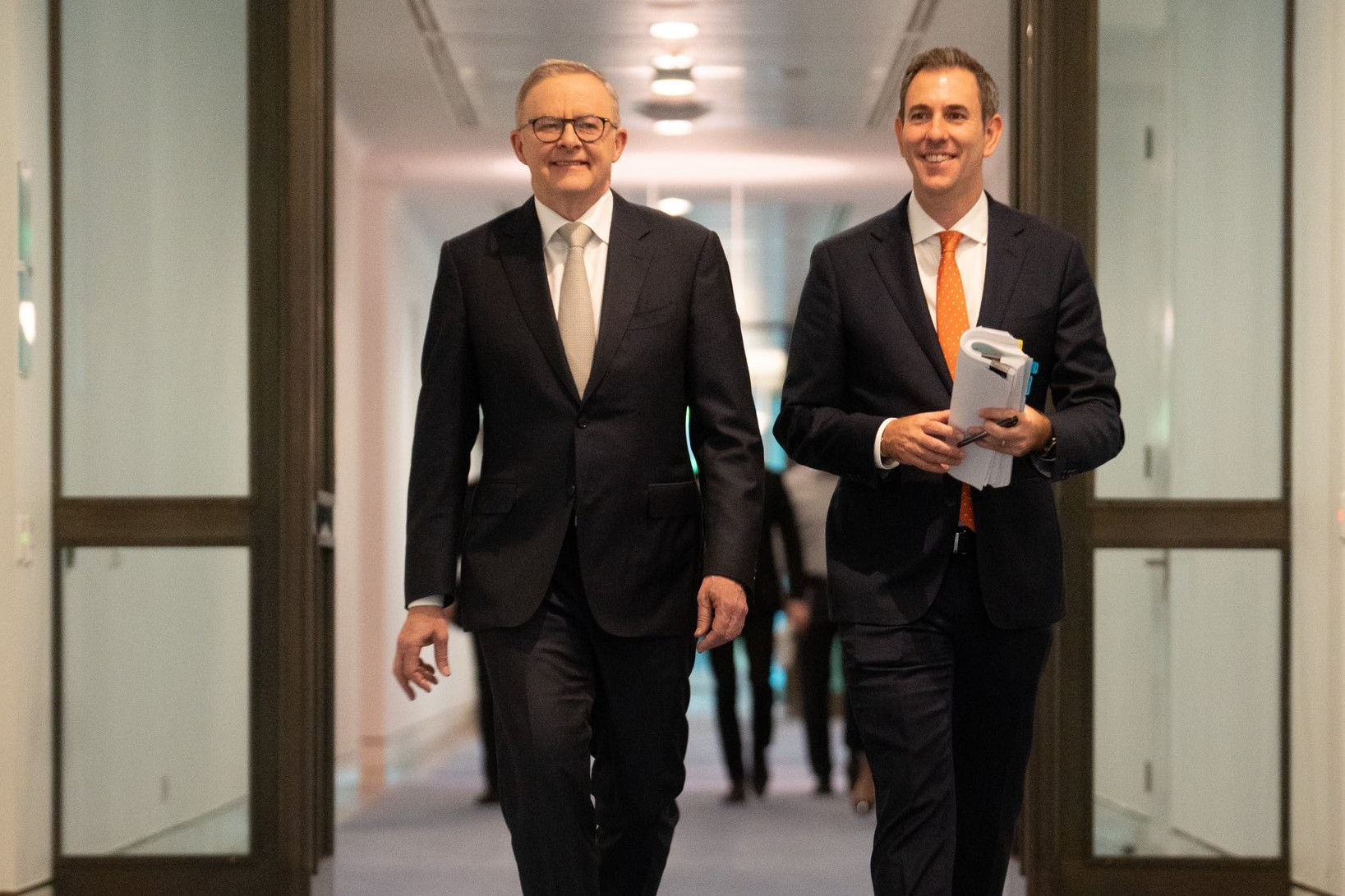
New policies have been largely offset across this year and next year to avoid adding to the inflationary problem. But the budget contains alarming news for households, with its estimates of soaring energy prices, writes MICHELLE GRATTAN.

TREASURER Jim Chalmers has brought down a no-surprises budget that delivers Labor’s election promises but warns Australians “hard decisions” are needed for the “hard days to come”.
The government has kept its spending tight, and returned nearly all the substantial revenue upgrade to budget repair, declaring it has put a “premium on restraint”.
New policies have been largely offset across this year and next year to avoid adding to the inflationary problem.
But the budget contains alarming news for households, with its estimates of soaring energy prices.
Treasury has assumed retail electricity prices will rise by an average of 20 per cent in late 2022. These prices are expected to rise by a further 30 per cent in 2023-24.
Retail gas prices are forecast to increase by up to 20 per cent in 2022-23 and 2023-24.
The electricity and gas price rises will contribute an estimated three quarters of a percentage point to inflation in 2022-23 and one percentage point in 2023-24.
The budget, which concentrates on implementing Labor’s election commitments, contains almost nothing that had not been foreshadowed by the government in recent weeks.
Chalmers described its five-point cost-of-living relief package as “responsible, not reckless”. It includes cheaper child care, expanded paid parental leave, cheaper medicines, more affordable housing, and “getting wages moving again”.
A new national “housing accord” between governments, investors and industry aspires to build “one million new, well-located homes over five years from 2024”. The government’s role will be “co-ordinating and kick-starting the investment”.
While most of the supply would come from the market, the budget commits an initial $350 million in additional funding for another 10,000 new affordable homes, extra to existing commitments.
The housing accord and extended paid parental leave to 26 weeks by 2026 are the government’s two budget policy initiatives since the election.
The range of election promises funded in the budget include extra TAFE and university places, the aged care package, and initiatives for women. Women’s safety gets an investment of more than $1.7 billion.
One late and unwelcome addition to spending is $3 billion to respond to the recent floods.
The deficit for this financial year is forecast to be $36.9 billion, rising to $44 billion in 2023-24, $51.3 billion in 2024-25, and $49.6 billion in 2025-26.
Inflation, set to peak at 7.75 per cent in the December quarter, comes in at 5.75 per cent for 2022-23. It then falls to 3.5 per cent in 2023-24, before going down to 2.5 per cent in each of the following two years, which is within the Reserve Bank’s target range.
But the budget papers warn, “Significant risks remain to the inflation outlook”, including from international disruptions and a tight labour market.
The budget forecasts economic growth will fall from 3.25 per cent this financial year to 1.5 per cent in 2023-24, while unemployment is set to rise from 3.75 per cent in 2022-23 to 4.5 per cent in 2023-24. Real wages are not forecast to increase until 2024.
Chalmers said: “The global economy teeters, again, on the edge – with a war that isn’t ending, a global energy crisis that is escalating, inflationary pressures persisting, and economies slowing – some of them already in reverse”.
Australia could avoid the worst of the overseas turbulence, but could not completely escape it, he said.
As part of the budget’s commitment to “restraint”, payments are set to fall in real terms over the next two years, while real spending growth over the forward estimates averages only 0.3 per cent a year.
“Our responsible decisions mean gross debt-to-GDP will be 37.3 per cent in 2022-23, and remain lower over the forward estimates compared to the pre-election forecasts,” Chalmers said.
He said the budget repair package delivered $28.5 billion in improvements over the coming four years.
Some $22 billion had been identified in savings and wasteful or unnecessary spending had been unwound or redirected.
Long term savings include much of the big infrastructure spending proposed in the March budget. The proposed Hells Gates Dam has been cancelled.
The one new tax initiative in the budget is a multinational tax integrity package that raises about $1 billion over four years. The budget also says extending compliance programs for tax avoidance will raise $3.7 billion over four years.
The first “wellbeing” budget statement, “Measuring What Matters” finds Australia did as well as or better than the OECD average on 21 out of 32 indicators. But Australia did worse (and is declining) on women feeling safe, threatened species and household debt.
The opposition said the budget had done nothing to help the family budget.
Shadow treasurer Angus Taylor said the test for the budget was to build on the strong position inherited from the Coalition to address the cost of living crisis.
“Labor has failed this test,” Taylor said.
“Just before the election, the Prime Minister told Australians that they ‘will be better off under a Labor government’. In fact, by Christmas, the typical Australian family will be at least $2,000 worse off.
“There is no credible plan to deal with the source of inflation or to help families deal with immediate cost of living pressures,” Taylor said.
The Business Council of Australia was broadly supportive of the budget, describing it as “a cautious and careful budget that avoids making our inflation problem worse”.![]()
Michelle Grattan, Professorial Fellow, University of Canberra. This article is republished from The Conversation.
Who can be trusted?
In a world of spin and confusion, there’s never been a more important time to support independent journalism in Canberra.
If you trust our work online and want to enforce the power of independent voices, I invite you to make a small contribution.
Every dollar of support is invested back into our journalism to help keep citynews.com.au strong and free.
Thank you,
Ian Meikle, editor




Leave a Reply